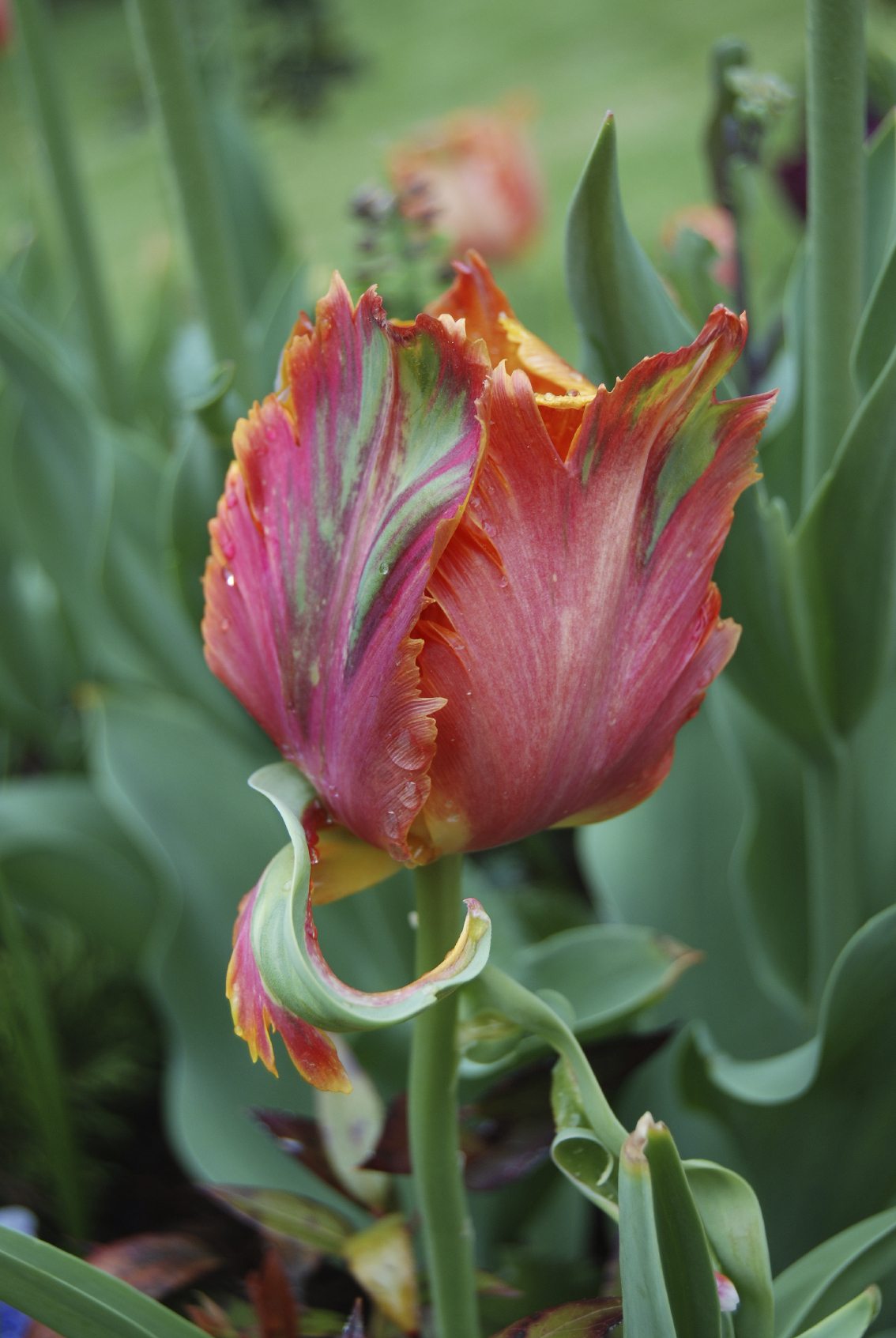Parrot Tulip Bulbs – Growing Tips And Parrot Tulip Information


Growing parrot tulips isn’t difficult, and care of parrot tulips is nearly as easy, although these tulips need a bit more attention than standard tulips. Read on to learn more.
Parrot Tulip Information
Parrot tulips, which first appeared in France, found their way to the Netherlands in the Eighteenth century, where they were highly prized and extremely expensive. The tulips are hardy in USDA planting zones 4 through 7. Parrot tulips are cup-shaped, fringed, twisted and ruffled tulips decorated with vivid, flame-like splashes, stripes or feathery markings. Parrot tulip flowers are available in a range of bright colors, including red, violet, yellow, orange, pink, green and near black. Parrot tulip flowers are huge – measuring nearly 5 inches (12.5 cm.) across on 15 to 20 inch (37.5 to 50 cm.) stems. Parrot flowers are big, fancy tulips that deserve a spot in a flower bed or border where their exotic beauty can be fully appreciated. Plant extra parrot tulip bulbs; the long-stemmed beauties are stunning in bouquets.
Growing Parrot Tulips
Plant parrot tulip bulbs in full sunlight and fertile, well-drained soil any time between early autumn and November. Select a site protected from harsh wind, as long-stemmed parrot tulip flowers are somewhat fragile. Plant the bulbs about 5 inches (12.5 cm.) deep, with 4 to 6 inches (10 to 15 cm.) between each bulb. Water lightly after planting, then cover the area with 2 to 3 inches (5 to 7.5 cm.) of shredded bark, pine needles, or other organic mulch.
Care of Parrot Tulips
Remove the mulch as soon as your parrot tulip flowers sprout in spring. This is also the time to begin supplemental watering, which should occur weekly until the flowers fade in early summer. Use a hose or drip system and don’t damage the blooms by watering from above. Feed the tulips every month during the growing season, using a balanced fertilizer with an NPK ratio such as 10-10-10. Remove blooms and flower stems as soon as parrot tulip flowers fade, but don’t remove the foliage until it dies down and turns yellow. This is critical, as the green foliage absorbs energy from the sunlight, which supplies food that powers the bulbs for the next blooming season. Dig up parrot tulip bulbs after the foliage dies down. Store the bulbs in a warm, dry location until the temperatures drop in autumn, then replant the bulbs. Discard any bulbs that look deformed, diseased or rotted.
Gardening tips, videos, info and more delivered right to your inbox!
Sign up for the Gardening Know How newsletter today and receive a free copy of our e-book "How to Grow Delicious Tomatoes".

A Credentialed Garden Writer, Mary H. Dyer was with Gardening Know How in the very beginning, publishing articles as early as 2007.
-
 4 Superfast Composting Methods: Turn Waste Into Garden Gold In 30 Days Or Less
4 Superfast Composting Methods: Turn Waste Into Garden Gold In 30 Days Or LessTry the fastest composting methods to turbocharge your pile and transform kitchen scraps and garden waste into finished compost in just a few weeks.
By Mary Ellen Ellis
-
 Best Spider Plant Soil – Complete Soil Guide And Expert Tips For Keeping Plants Happy
Best Spider Plant Soil – Complete Soil Guide And Expert Tips For Keeping Plants HappySpider plants are fun and easy plants to grow, but what is the best soil for a spider plant? Selecting the right soil is important so they can thrive.
By Bonnie L. Grant